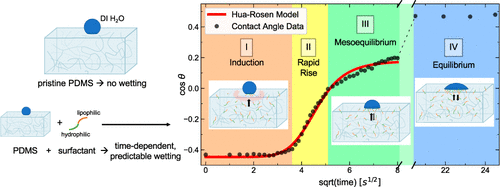Prof. Paranjape Publishes Paper in Langmuir

Makarand (“Mak”) Paranjape, ISMSM Faculty Member and an associate professor in the Department of Physics, has recently published the paper, “Modeling Dynamic Surface Tension on Surfactant-Enhanced Polydimethylsiloxane” in Langmuir with Daniel O’Brien, a graduate student in his lab. Polydimethylsiloxane (PDMS) is a widely used and versatile hydrophobic silicone rubber, but it is sometimes advantageous for it to be hydrophilic for extended periods, such as in passive microfluidic system applications. To induce autonomous wetting in hydrophobic materials like PDMS, surfactants can be added directly to the solid. Paranjape and O’Brien adapt an empirical model for the dynamic surface tension of PDMS with different surfactants introduced that is better suited to longer time scales. Their model has good generalizability for characterizing a wide range of nonionic surfactants.
